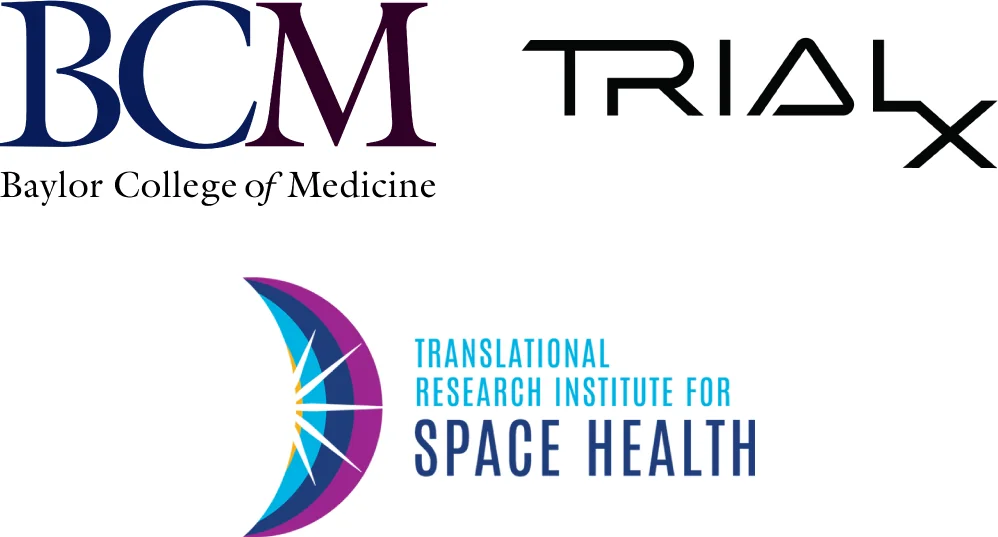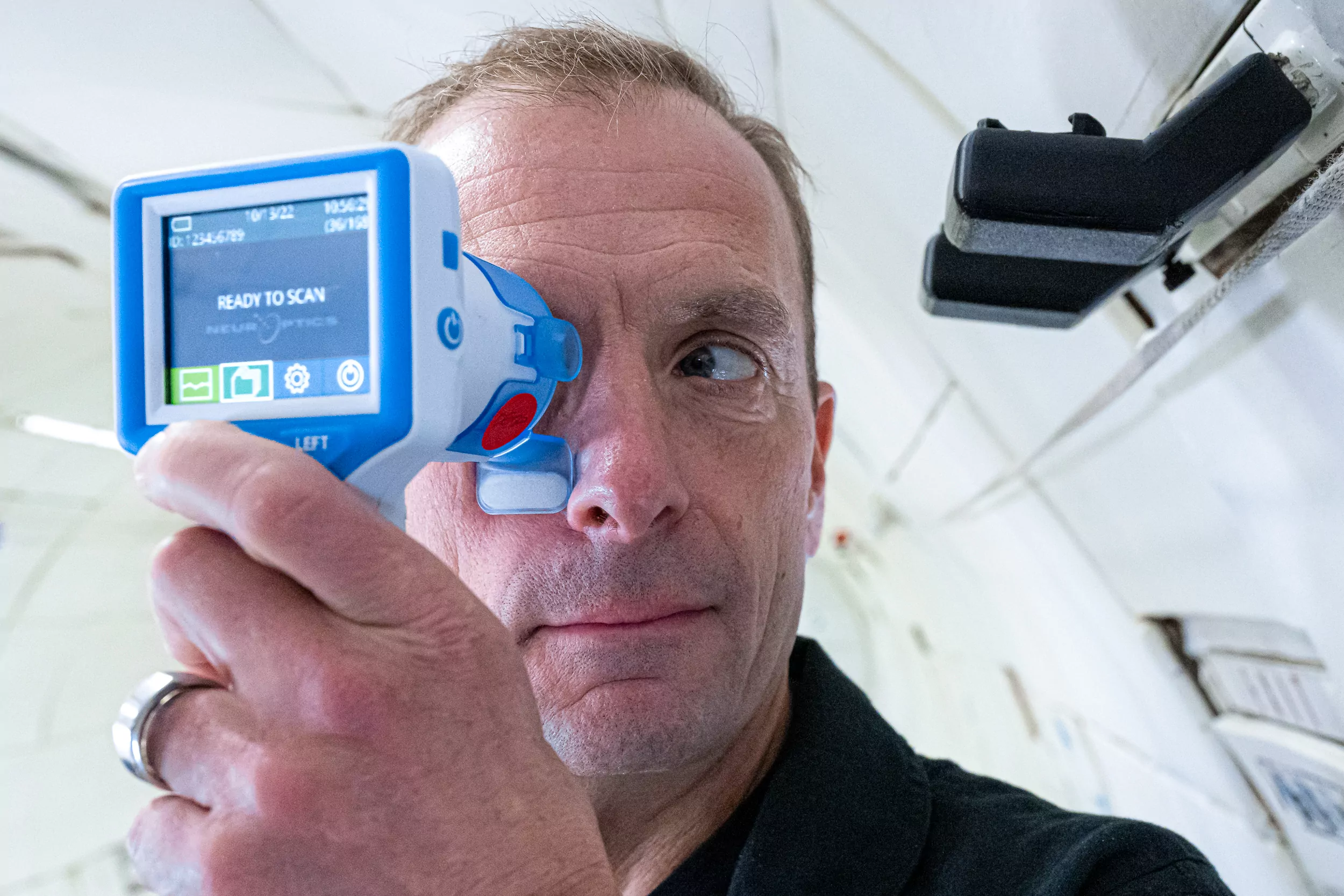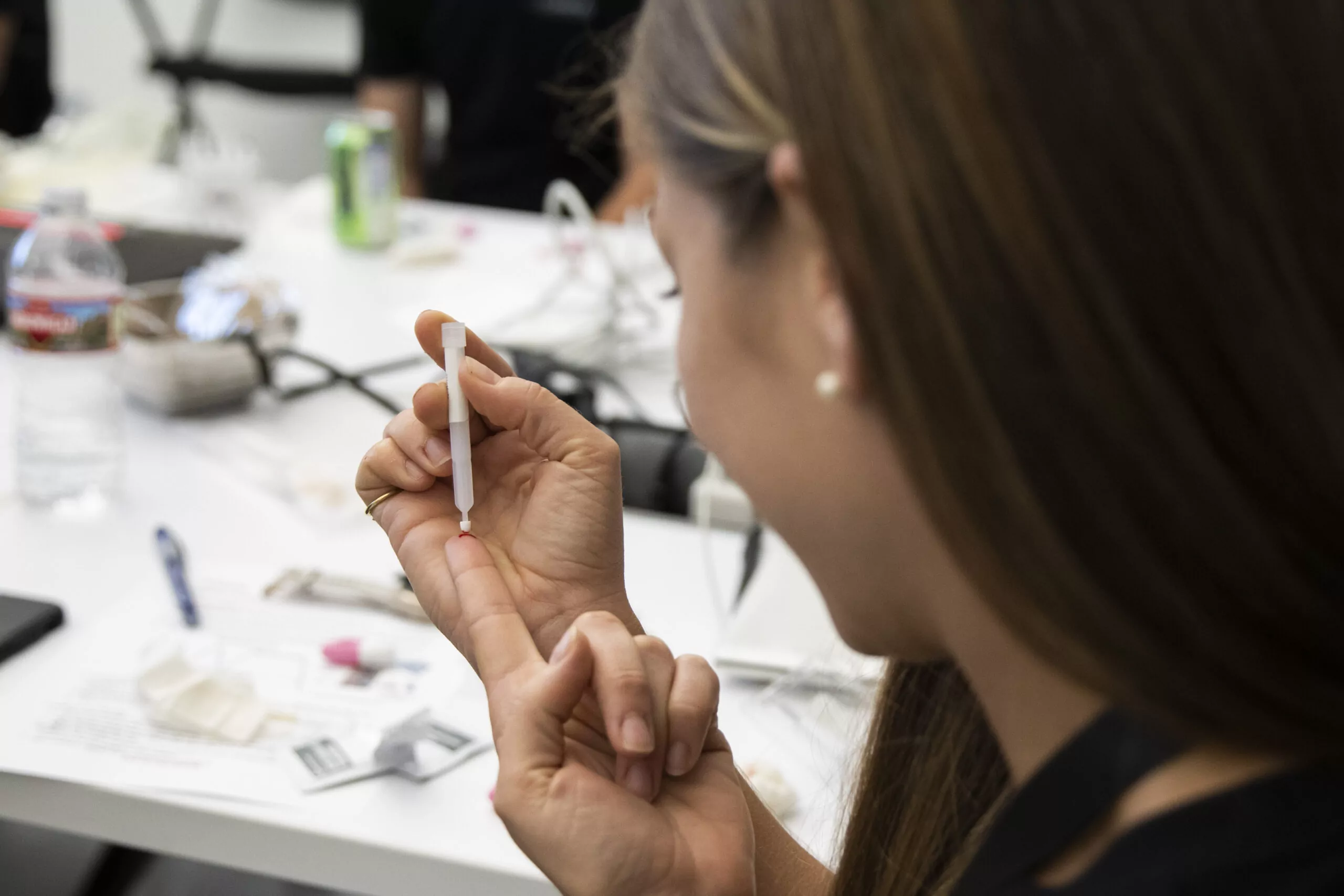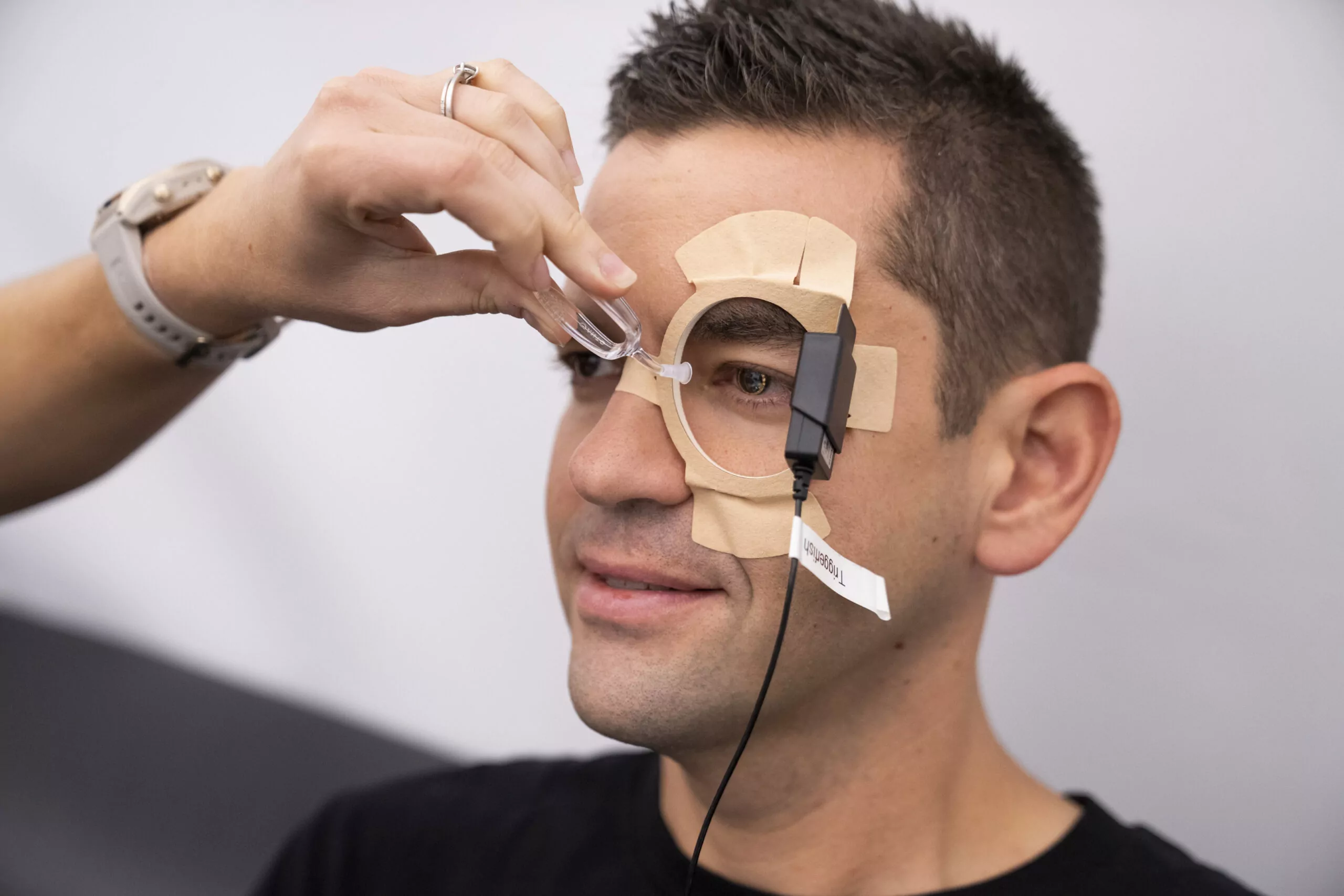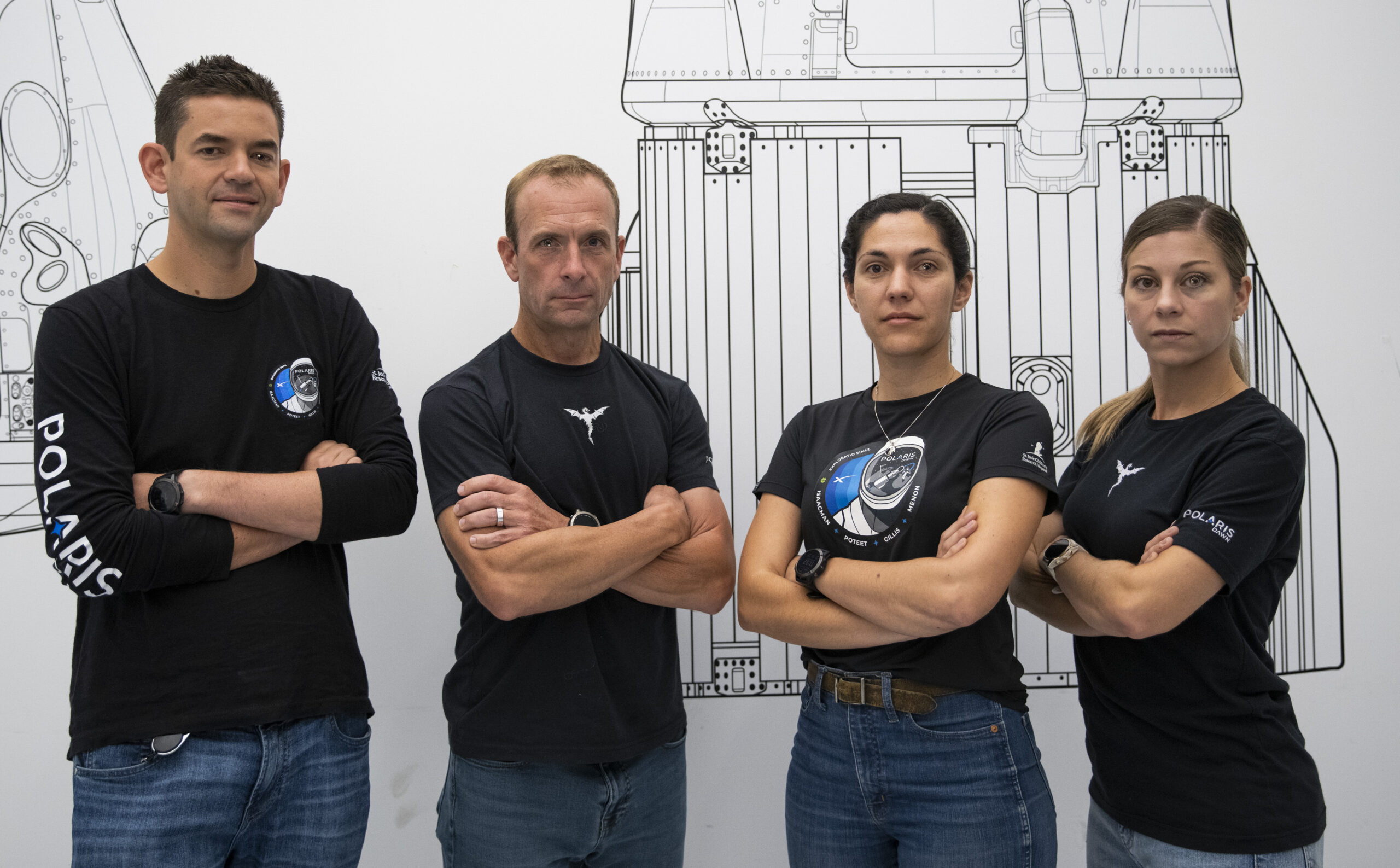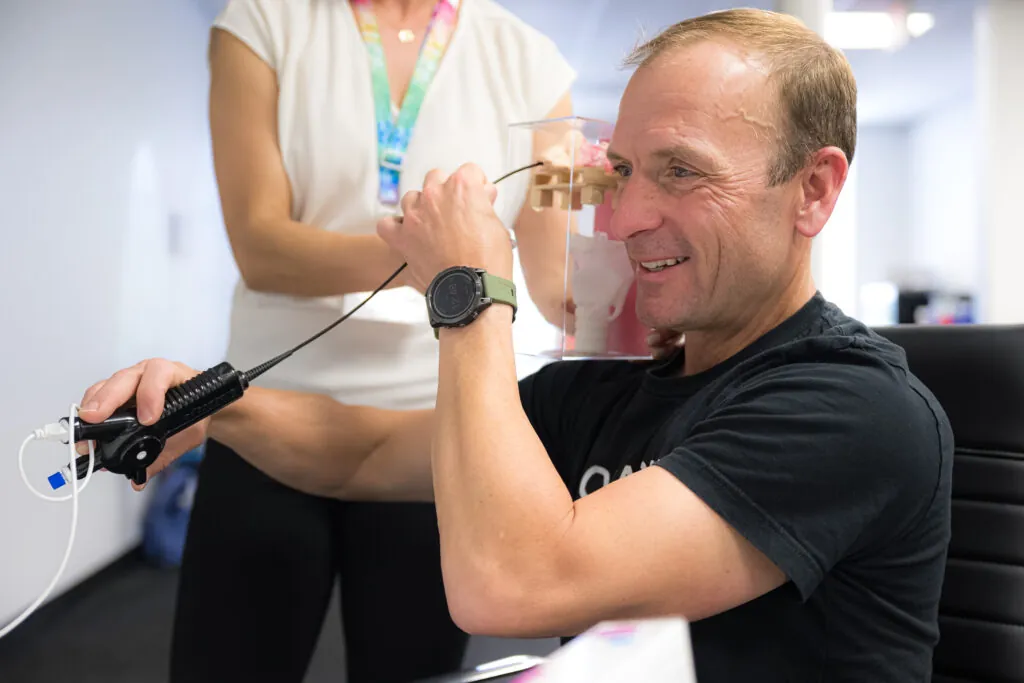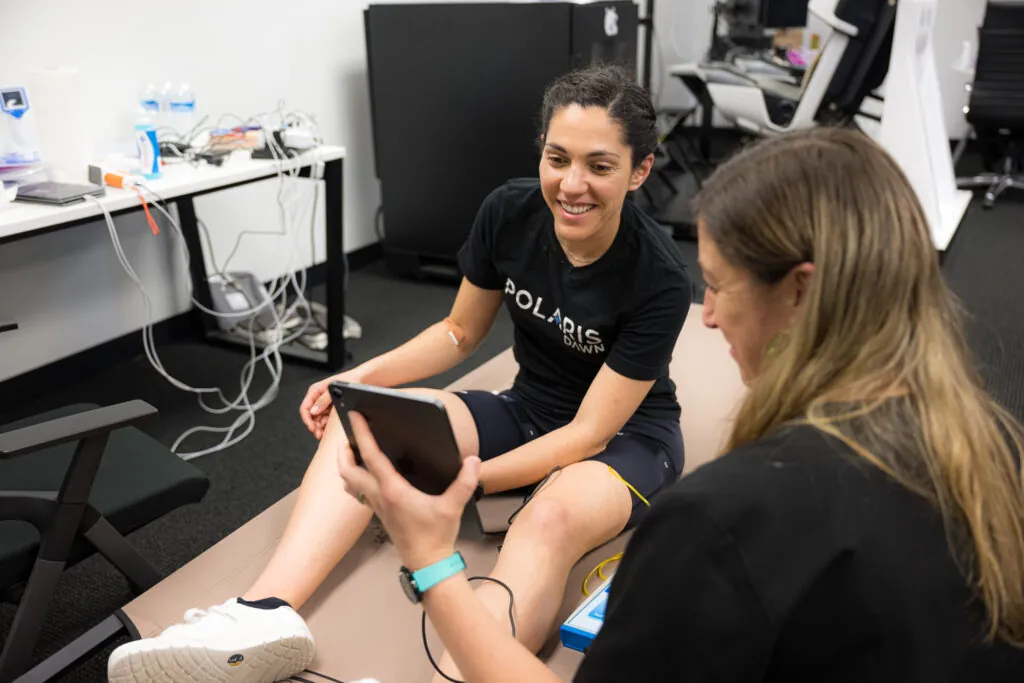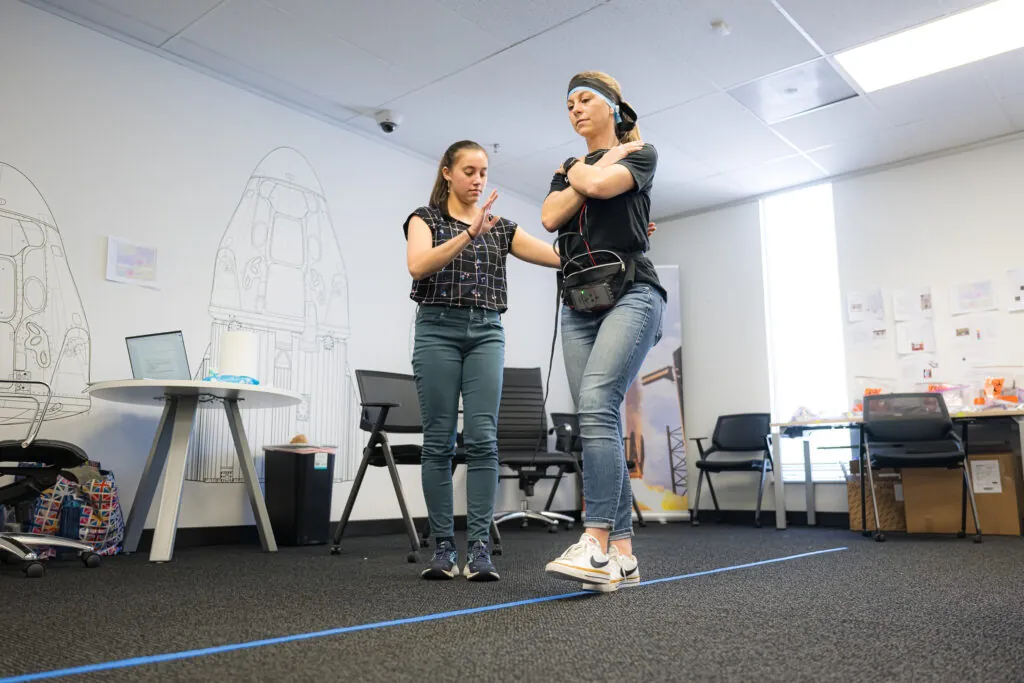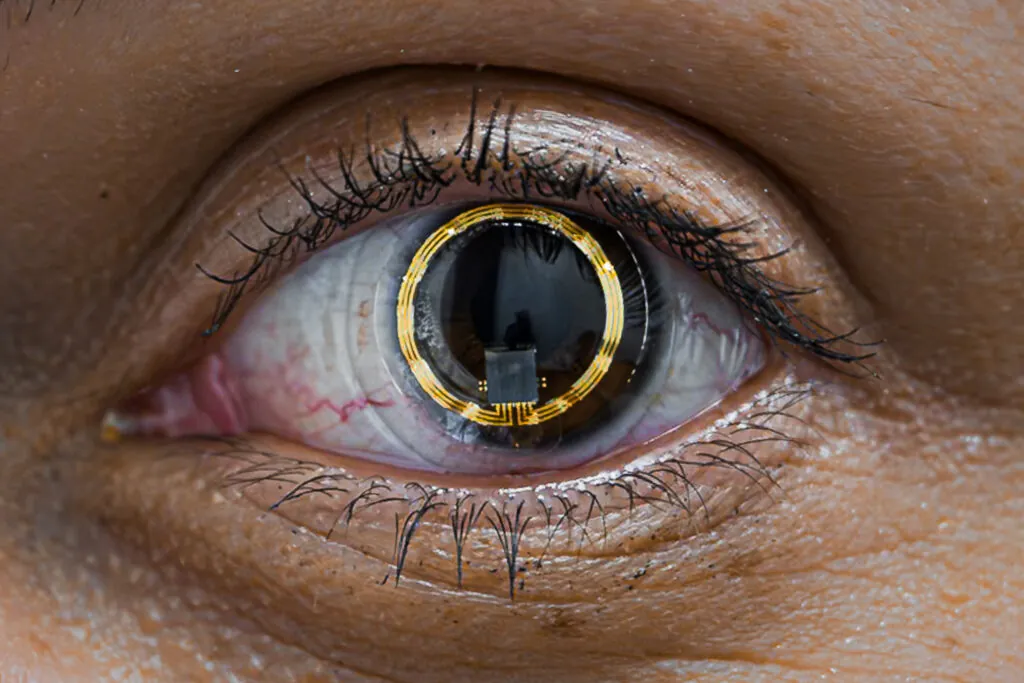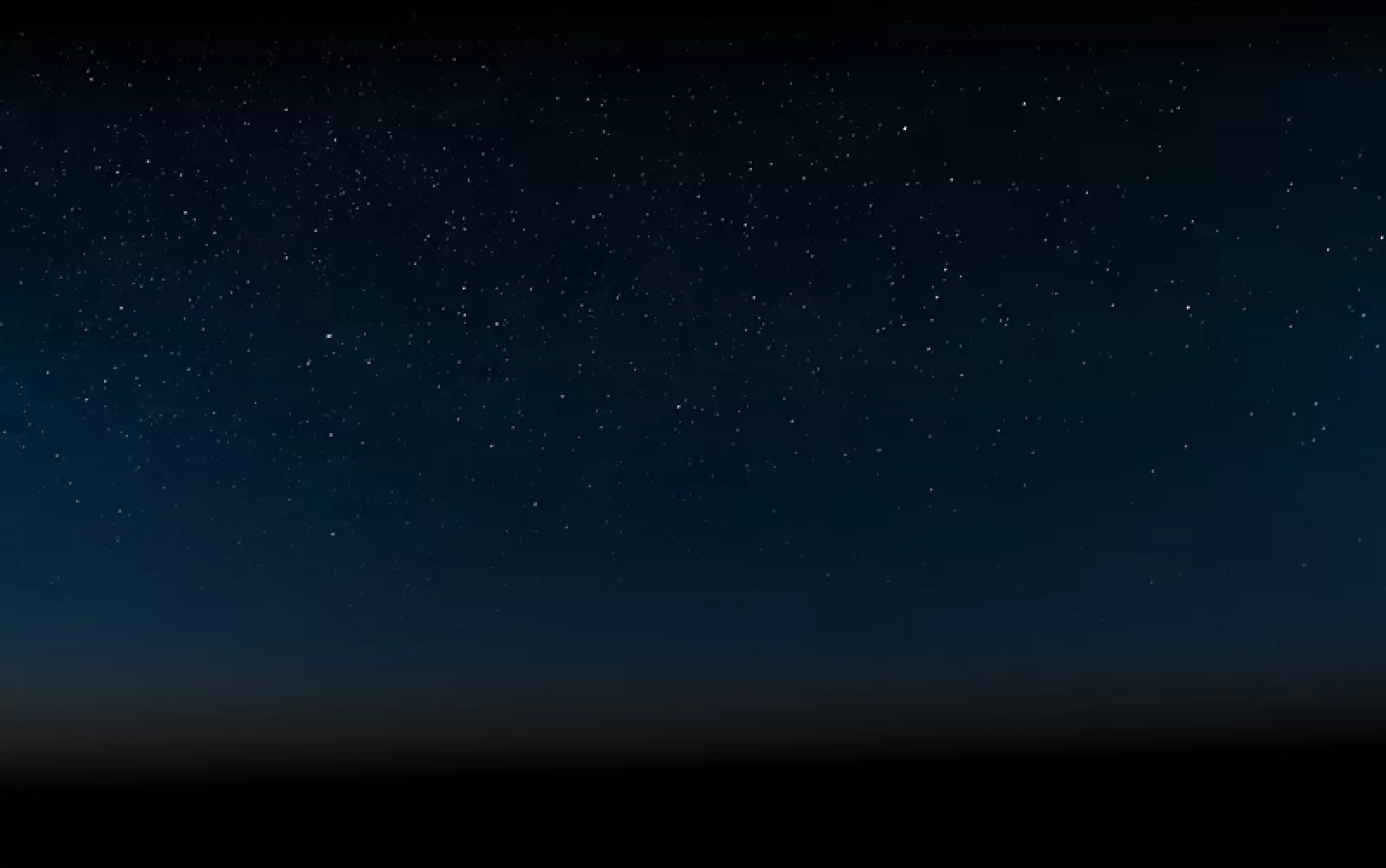Cross-Coupled Illusion
Weightlessness causes bone density loss, muscle loss, brain changes, and affects every system in the human body. Artificial gravity would prevent these changes and make long-duration spaceflight much more tolerable for the human body. One of the easiest ways to provide artificial gravity is with a short-radius centrifuge. However, the short-radius centrifuge can be quite disorienting due to a sensation called the cross-coupled illusion, which makes people feel as if they’re tumbling if they move their head slightly while being spun in the centrifuge. It is possible that this sensation may not happen once the body has adapted to microgravity. This would make the short-radius centrifuge an appealing option for providing artificial gravity on future exploration missions.
Eye Changes
Relatively recently, it was discovered that astronauts were experiencing Spaceflight Associated Neuroocular Syndrome (SANS), which symptoms include swelling of the optic nerve, changes in the shape of the eye, and changes to vision. It is thought this is due to the absence of gravity acting on the body, causing a headward fluid shift and may lead to changes in pressure in the brain and eye. To identify the initial adaptation of the eye upon entering microgravity, the Polaris Dawn crew will don smart contact lenses with tiny micro-sensors that continuously measure pressure inside their eyes. The crewmembers will also measure whether their vision changes on-orbit. This data could confirm fluid shifts are indeed causing changes to the eye, which may ultimately contribute to SANS.
Gravity Transitions
When going to space, crewmembers are exposed to sustained microgravity. Anecdotally, astronauts report an “inversion illusion” in which they feel like they are tumbling forward upside down. While this is a fundamental experience (e.g., going from having gravity to suddenly not), this has never been studied systematically. Upon main engine cutoff, Polaris Dawn crewmembers will pay attention to the sensations they experience in order to capture the feeling. Additionally, crewmembers will pay attention and report sensations upon re-entry to a gravitational environment. We anticipate the Polaris Dawn crew will experience an illusion sensation of pitching backwards or even translating backwards when reintroduced to gravity.
GVS Disorientation
Upon returning to Earth, astronauts suffer from balance and coordination challenges that are a result of their brain readapting to gravity. This study aims to test an analog of that feeling, sending electricity through the inner ears to simulate the balance and coordination challenges astronauts experience. If accurate, this tool could be used to introduce future human spaceflight crews to the sensation during training.
Repeat Flyer Motion Sickness
Generally, when astronauts go to space more than once, their motion sickness is reduced compared to their initial flight. Researchers do not know if that is because astronauts have come up with techniques to avoid provoking motion sickness or if there is a lasting adaptation, or habituation to the microgravity environment. To test this, Polaris Dawn crewmembers will perform provocative head movements and then rank their motion sickness.
Virtual Reality (VR) training
Long duration spaceflights create a significant gap between training on Earth and performing tasks in space. The ability to meet mission objectives becomes more challenging as skill degrades over this time gap, which may also be accelerated by space adaptations like changes in sensorimotor and cognitive function. In this study, the Polaris Dawn crew will perform manually-piloted Mars landings in virtual reality (VR) before their mission. Soon after they complete their space mission, the crew will perform this task again to explore changes in skill performance after spaceflight and while readapting back to Earth’s environment. This research will help inform how mission critical task performance may be impacted by the space environment, and what operational planning is needed to mitigate these changes in long duration exploration crews, like a mission to Mars.
